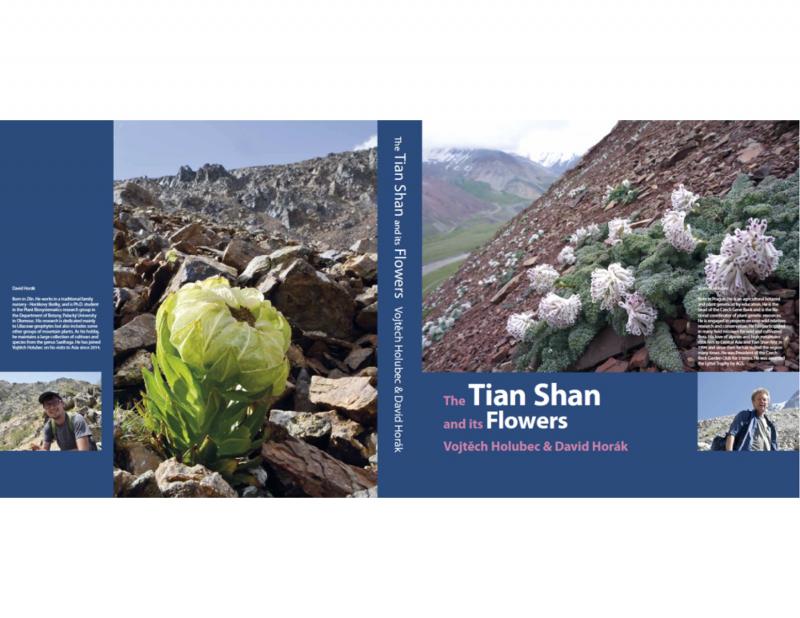The Tian Shan and its Flowers by Vojtěch Holubec and David Horak
Self-published by the author, 2018. 404 pp., over 900 photos covering 621 species. €74., including postage. Contact him at [email protected]
Copies are also available now and in stock from NARGS for $69 (Sorry, U.S. only). Mail check to NARGS, POB 18604, Raleigh, NC 27619-8604. Or email for directions to pay on web site: [email protected]
Since childhood, tales of the Silk Road have enthralled me. Vojtěch Holubec and David Horak's definitive new book on the northern most part of it, The Tian Shan and its Flowers, grabbed my attention immediately. Vojtěch Holubec is a plant geneticist and agricultural botanist by training, now head of the Czech Gene Bank in Prague. He has been traveling to the Tian Shan and Central Asia since 1994. And even more significant to the growers among us, he cultivates many of these plants in his own garden. Since 2014, David Horak, a Ph.D. student and nurseryman, has joined Holubec on his field trips. Together, they filled their masterwork with stunning photos of the mountains and the flowers as well as technical information.
The first forty pages introduce the diversity of habitats and the botanists who cataloged them. The range, which translates to “Mountains of Heaven,” is one of the longest in Central Asia, stretching 1800 miles (2897m). It runs between China, Kyrgyzstan, and Kazakhstan. Mt. Tomur (Jengish Chokusu) is the highest mountain in the Tian Shan at 24,406 ft (7,439 m). Mountain steppe zone begins at 8530 ft (2600m) and alpine cushions at 12,795 ft (3600m). Lower elevations include coniferous as well as broad-leafed deciduous forests and thickets, meadows, semi-desert, desert and even halophytic vegetation. Then come the 621 plant species, 900 photos, organized by family. Sure, the book gives detailed characteristics and distribution, which is so helpful for the botanist and mountain flora lover. But more meaningful to me, a grower, is the habitat and cultivation notes. Of Tulipa kaufmanniana, which is common in our gardens, the notes read: "Habitat: In meadows, bushy and stony slopes from foothills to middle montane zone; Cultivation: In well drained sandy soil." For Tulipa greigii: "Habitat: Clayey slopes in foothills and middle montane zone; Cultivation: In well drained soil in sunny position." (emphasis mine) Wish I had this as a reference book 30 years ago.
Some of the local plants, besides the tulips, we already grow in our gardens. Clematis tangutica is rampant in mine. Salvia sclarea hold its own in my winters. Verbascum phoeniceum self sows nicely. Bergenia crassifolia (almost hardy for me) flourishes in a pot. Perovskia angustifolia is on the street corner near my local YMCA. And yet, there are many fabulous plants we don't yet commonly grow: Trollius lilacinus, Corydalis fedtshenkoana, Saussurea involucrata, to a name a few. Having the notes "in a cold place" helps to understand how to try and grow the plants, and doesn't that make life a little more interesting?
Elisabeth Zander has been growing a diverse range of seed since the late 1980'ies when she joined NARGS. It was a next step after vegetable gardening. She went on to run the NARGS Seed Exchange for a few years. And she still sows a few hundred species yearly. Just for the fun of it.

